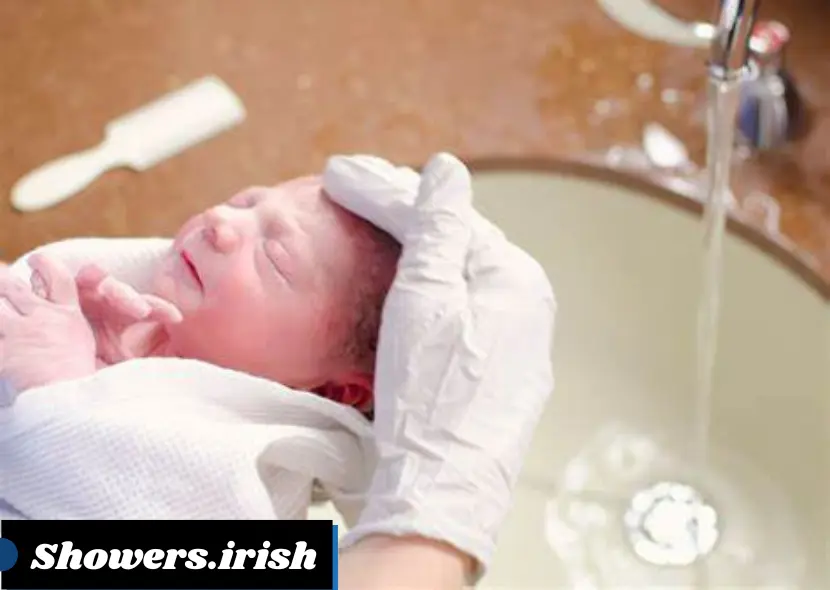Welcoming a newborn into the family is an exciting time filled with numerous adjustments, including figuring out the best way to care for their delicate skin. One common question that arises is, “How often should you shower a newborn?” This article delves into the specifics of newborn hygiene, exploring how often they should be bathed, the benefits of different bathing routines, and tips for making bath time safe and enjoyable for both you and your baby.
Understanding Newborn Bathing Needs
Bathing a newborn is not just about cleanliness but also about establishing a comforting routine. Understanding how often your newborn needs a bath is crucial for their health and well-being.
The Basics of Newborn Bathing
Newborns have sensitive skin that can be easily irritated, so it’s important to approach their bathing routine with care. Unlike older children and adults, newborns do not require daily baths. Their skin produces natural oils that help protect it, and frequent washing can strip these oils away, potentially leading to dryness or irritation.
When to Give a Newborn a Bath
For the first few weeks, a sponge bath is typically recommended until the umbilical cord stump falls off and heals completely. This usually takes about one to two weeks. After that, you can start giving your baby a gentle bath in a baby tub or the sink.
Frequency of Bathing Newborns
Newborns generally do not need a bath more than two to three times a week. Overbathing can lead to dry skin and other skin issues. Between baths, you can clean your baby’s face, neck, and diaper area with a damp washcloth.
Choosing the Right Bathing Routine
Finding the right routine for bathing your newborn can make the process smoother and more enjoyable for both you and your baby.

Sponge Baths vs. Full Baths
During the early weeks, sponge baths are ideal because they avoid submerging the baby in water until their umbilical stump is healed. Use a soft washcloth or sponge and lukewarm water to gently clean the baby’s body, focusing on areas that might get dirty, such as the neck and behind the ears.
Transitioning to a Baby Tub
Once the umbilical stump has healed, you can introduce your baby to a baby tub or a small basin. Ensure that the water is warm, not hot, and test it with your elbow or a bath thermometer to ensure it’s comfortable. The water level should be shallow enough to keep your baby safe and prevent any risk of drowning.
Timing and Routine
Bath time can be a soothing ritual that helps establish a bedtime routine. Some parents find that bathing their baby in the evening helps to relax them before sleep. Choose a time when you can focus on your baby without distractions, ensuring a calm and positive experience.
Ensuring Safe Bathing Practices
Safety is paramount when bathing a newborn. Ensuring the bath environment and practices are safe will help prevent accidents and keep your baby comfortable.

Preparing the Bath Area
Before starting the bath, gather all necessary supplies, including a towel, baby soap, shampoo, and a cup for rinsing. Ensure the room is warm to prevent your baby from getting cold. Never leave your baby unattended in the bath, even for a moment.
Choosing Baby-Friendly Products
Use mild, fragrance-free baby soap and shampoo to avoid skin irritation. Newborn skin is sensitive and can react to harsh chemicals or strong fragrances. Opt for products specifically formulated for babies to ensure they are gentle and safe.
Avoiding Common Bathing Mistakes
Common mistakes include using water that is too hot, leaving the baby unattended, or using harsh soaps. Always test the water temperature before placing your baby in the tub and keep one hand on them at all times to ensure their safety.
Addressing Common Concerns
Parents often have various concerns about bathing their newborns, from skin care to avoiding potential issues. Addressing these concerns can help you feel more confident in your baby care routine.
Dry Skin and Eczema
Newborns are prone to dry skin, and overbathing can exacerbate the issue. If your baby’s skin appears dry or flaky, try reducing the frequency of baths and use a gentle moisturizer to keep their skin hydrated. Consult with your pediatrician if you suspect eczema or other skin conditions.
Bathing During Illness
If your baby is unwell, you might wonder whether it’s okay to bathe them. In most cases, a bath can be soothing and help keep your baby comfortable. However, if your baby has a fever or is very ill, consult your pediatrician before proceeding with a bath.
Bathing for Special Circumstances
For babies with special needs or medical conditions, bathing routines may need to be adjusted. Always follow the advice of your healthcare provider to ensure that your baby’s specific needs are met.
Conclusion
In summary, newborns do not need daily baths. Two to three times a week is generally sufficient to keep your baby clean while preserving their delicate skin. Opt for sponge baths initially and transition to full baths once the umbilical cord stump has healed. Ensure that bath time is safe and enjoyable by preparing the bath area, choosing gentle products, and avoiding common mistakes. Addressing common concerns and adjusting routines as needed will help you establish a positive and effective bathing routine for your newborn.
For further reading, consider exploring topics related to baby skin care, establishing bedtime routines, and tips for new parents. Feel free to share your own experiences or questions about newborn care to foster a supportive community of parents.
Frequently Asked Questions (FAQs)
1. How often should I bathe my newborn?
You should bathe your newborn two to three times a week. Overbathing can lead to dry skin and irritation. In the early weeks, sponge baths are recommended until the umbilical cord stump falls off and heals.
2. When can I start giving my baby a full bath?
You can start giving your baby a full bath in a baby tub or sink once the umbilical cord stump has fallen off and the area has healed completely, usually within one to two weeks after birth.
3. What should I use to bathe my newborn?
Use mild, fragrance-free baby soap and shampoo to avoid skin irritation. Opt for products specifically designed for newborns to ensure they are gentle on your baby’s sensitive skin.
4. How can I ensure my baby’s bath is safe?
Prepare the bath area by gathering all necessary supplies and checking that the room is warm. Always test the water temperature with your elbow or a thermometer before placing your baby in the tub. Never leave your baby unattended during bath time.
5. What should I do if my baby has dry skin or eczema?
If your baby’s skin appears dry or flaky, reduce the frequency of baths and use a gentle, fragrance-free moisturizer. Consult your pediatrician if you notice persistent dryness or signs of eczema to receive appropriate care and recommendations.
Keeping your newborn’s skin clean is crucial, but so is understanding the broader aspects of personal hygiene. Just as you monitor your baby’s bath routine, it’s important for adults to be aware of their own hygiene practices. For example, you might wonder about hair loss during your own shower. Knowing what’s normal can help alleviate concerns and ensure you’re maintaining a healthy routine.
If you’re curious about how many hairs you should typically lose in the shower, check out this detailed guide on hair loss: How Many Hairs Should You Lose in the Shower?. This resource provides valuable insights into average hair loss rates and tips for managing hair health effectively. Understanding these details can help you make informed decisions about your personal care, just as you do for your newborn’s bathing routine.
Credit Website: www.ireland.ie/
